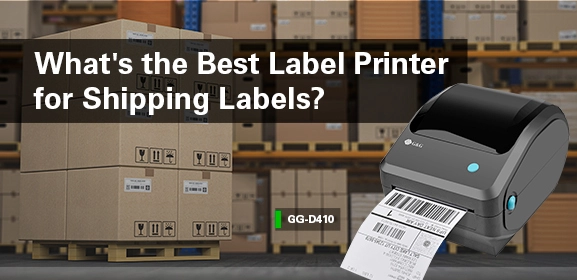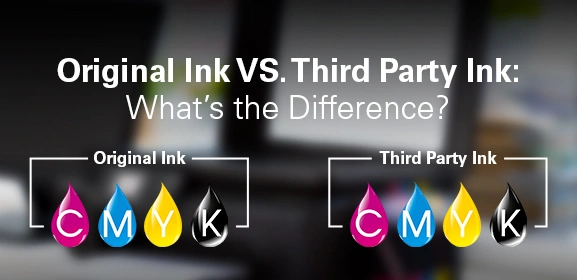-
Consumables
- Printers
- Industries
- Innovation
-
Partners
G&G Partner ProgramCo-Innovating Tomorrow Read More >
- About Us
-
Contact Us
The printing industry is undergoing a rapid transformation, fueled by technological innovations, a growing focus on sustainability, and the changing needs of businesses. As we look ahead to 2025, several key trends are reshaping the future of printing. Here are the top trends you’ll want to key an eye on.

In 2025, more companies will prioritize eco-friendly printing practices to reduce their environmental footprint. This shift is driven not only by growing consumer demand but also by stricter regulations. One of the most notable changes in sustainability will come from new regulations in Europe.
For example, starting in 2025, Catalonia in Spain will enforce the Waste Prevention and Efficient Resource Use Act, which bans single-use printer consumables, such as non-reusable or non-refillable toner cartridges. This regulation will push local companies to adopt refillable cartridges and remanufactured cartridges, creating growth opportunities for printer cartridge remanufacturers.
Similarly, the UK is tightening its rules under the Waste Electrical and Electronic Equipment (WEEE) directive, placing more responsibility on importers of printing consumables. Starting in January 2025, UK importers of printer consumables, including toner and ink cartridges, will need to register products, report quantities sold, and manage waste recycling.
On a broader scale, the EU’s new Sustainable Product Ecodesign Regulation (ESPR), effective in 2026, will extend product lifespan, ease repairs, enhance recycling, reduce harmful chemicals, and improve energy and resource efficiency. The proposed regulation will require OEMs to provide remanufacturers with access to cartridge chips or the means to reset them, and printer cartridges will need to be designed for easy disassembly and remanufacturing. The EU will also introduce digital product passports, allowing consumers to easily access sustainability information about the products they buy.
Artificial intelligence (AI) is changing how businesses manage their print fleets and improve operational efficiency. Companies are using AI for predictive maintenance and automating paper-to-digital processes.
More advanced AI technologies are also being used to improve energy efficiency, design low-emission devices, and even recommend sustainable printing consumables, as highlighted by research from Quocirca. This type of AI-driven insight helps businesses make smarter decisions about printing.
Some printer manufacturers, like Xerox, have already integrated AI into their products. Their AI-assisted AltaLink MFPs (multifunction printers) can automate tasks like document summarization, converting handwritten notes, and editing sensitive content. These printers also learn user behavior to optimize device settings for better performance.
Research by Quocirca shows that organizations expect 66% of their workforce to be mobile by 2025, up from 49% today. In Europe, countries with strong digital infrastructure like Sweden, Germany, and the Netherlands, remote work is already commonplace, supported by favorable labor laws and tax incentives. In 2025, we expect to see the growing demand of Cloud printing with the shift to remote and hybrid work environments.
Cloud-based solutions allow users to print documents from any device, at any location, without needing a direct connection to a specific printer. This flexibility is especially useful in today’s increasingly remote work environment.
Quocirca’s research also shows that 69% of organizations are already taking advantage of cloud print management solutions. However, security remains a concern, with 32% of businesses indicating data protection is their top priority.
As businesses reply more on digital workflows, print security is becoming a critical focus. According to Quocirca, 67% of decision-makers in the UK, US, and Europe reported experiencing at least one print-related data breach in the past year. The average cost of dealing with a single breach was over £1 million.
To address these risks, businesses are investing more in secure printing solutions and threat detection tools to protect sensitive information and prevent data leaks and cyberattacks.
Managed Print Services (MPS) are becoming increasingly popular as companies look to optimize their printing environments and reduce costs. By 2025, more organizations are expected to adopt MPS to streamline print operations, improve document workflows, and enhance security.
Quocira's report reveals that 73% of the organization plan to update their printing hardware within the next year. This creates a good opportunity for MPS providers to help companies manage these transitions smoothly. They can offer comprehensive solutions that monitor, manage, and optimize printer fleets. They help organizations reduce waste, improve device efficiency, and better track print usage.
The rise of MPS is also tied to the increasing need for security, as many MPS providers offer robust data protection features to safeguard sensitive information in print environments.
Digital transformation is one of the key shifts reshaping the printing industry as we approach 2025. As companies move towards hybrid work environments, the demand for digital solutions that support paper-to-digital workflows is growing. This trends includes automating document capture, processing, and storage, as well as using digital document management systems, and cloud storage to reduce reliance on physical printing.
For the print industry, developing solutions that support paper-to-digital workflows will be crucial for staying competitive. As businesses look for faster, more efficient processes, providing practical digital solutions will be key to meeting their needs.






